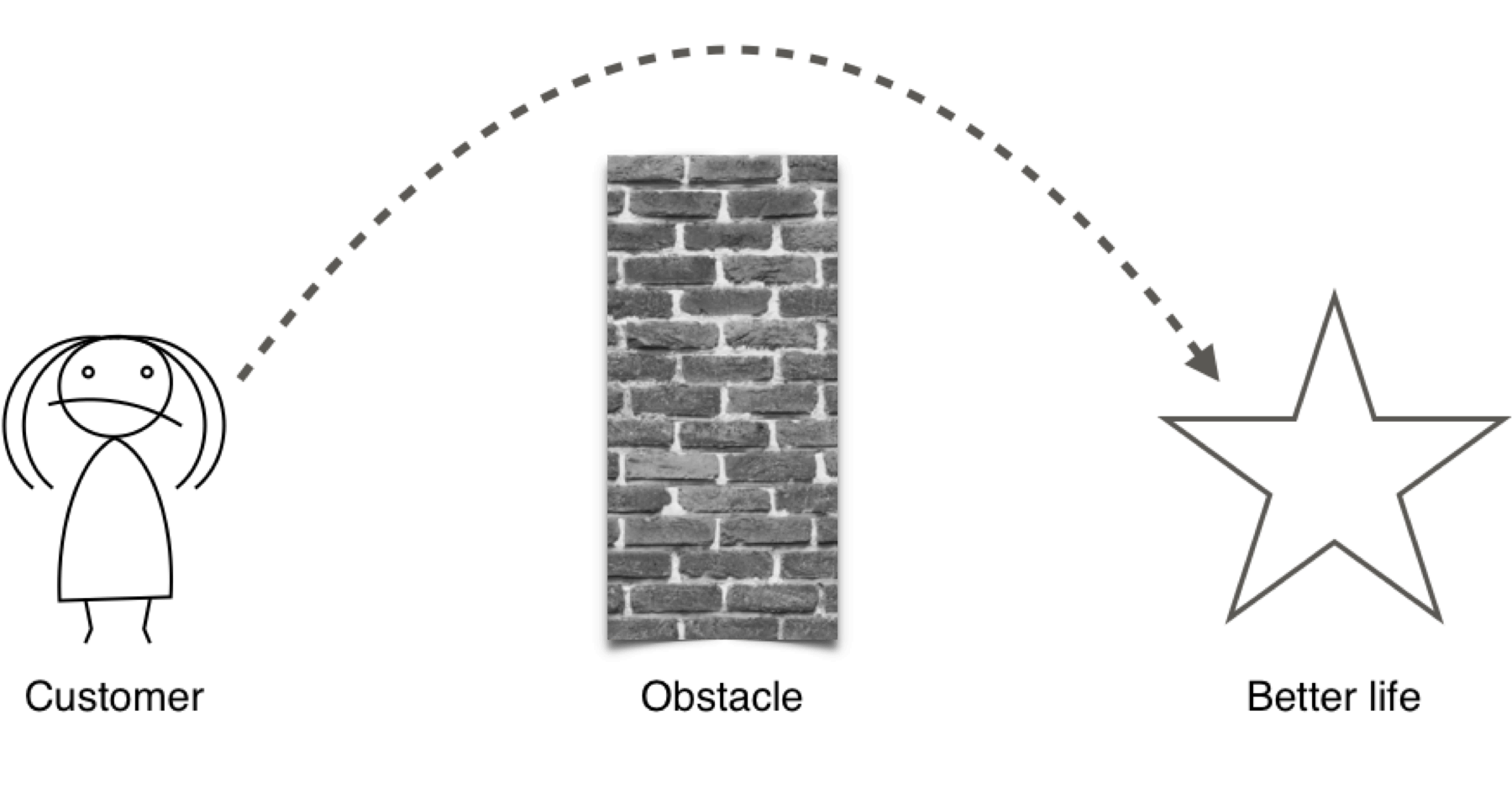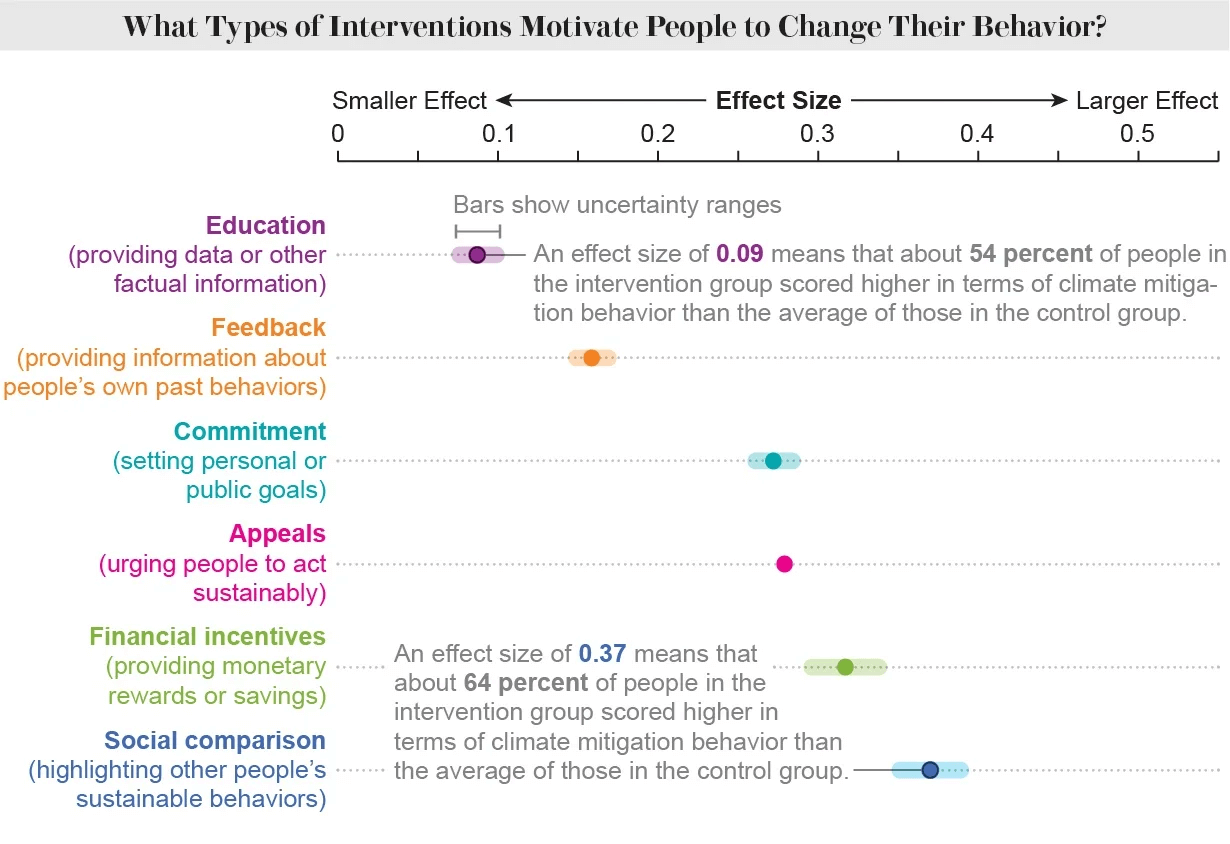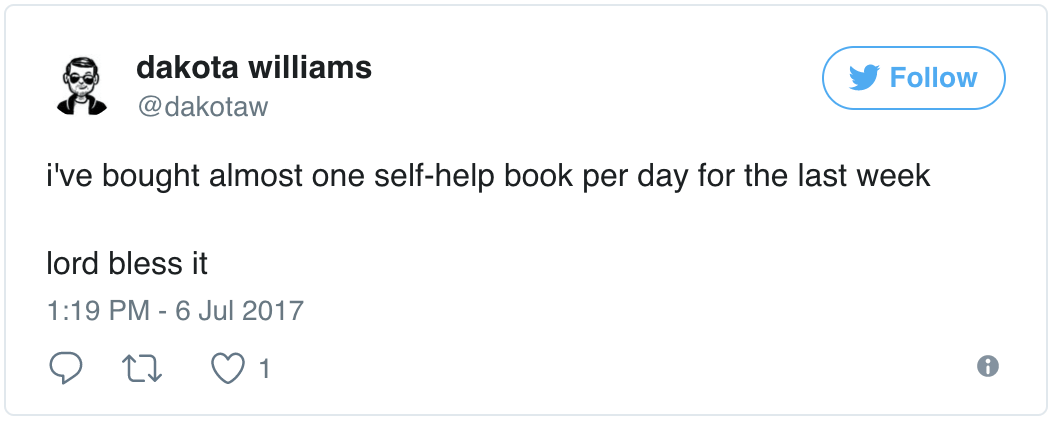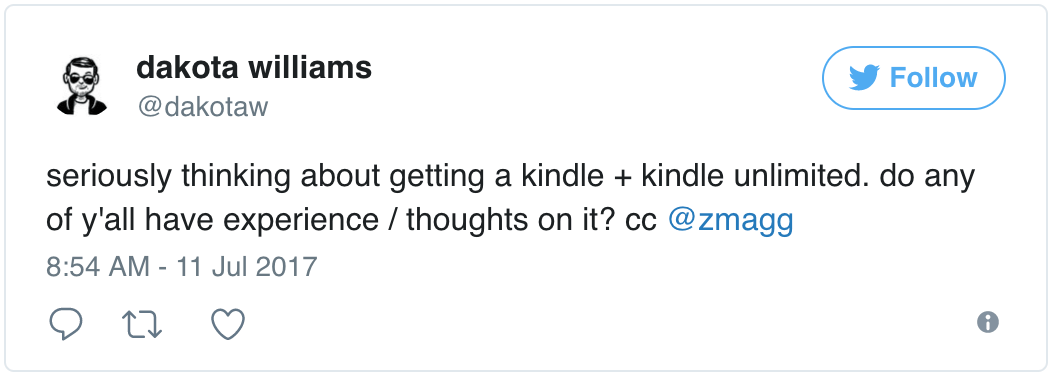What is Jobs to be Done? (JTBD)
Jobs to be Done (JTBD) is a theory for understanding what motivates customers to buy your product.
We all want our lives to be better. We have a vision for improving our lives, but there are obstacles in our path. That's where products and services come in: as customers, we "hire" products to help move us forward toward our vision for a better life.
Jobs to be Done examples
Example: buying a new lawn mower
Bob has decided to buy a new lawn mower. What are the underlying reasons that caused him to make this decision? The "functional" reasons are the clearest: Bob's old mower was loud, burnt oil, and cut gas unevenly. These often form the rationale we tell ourselves or our spouse: "Honey, the old lawn mower is on the fritz. I need to get a new one."
But in truth, deeper emotional and social factors affect Bob's decision. Most of his neighbors have purchased new, eco-friendly electric mowers. He feels their disapproving glances when he takes his old, loud, smoky mower out of the shed. He might not even consciously recognize that "fitting in" was a big motivation for buying the new mower.
Example: why do people buy makeup
Charles Revson, the founder of Revlon, famously said: "In the factory, we make cosmetics. In the drugstore, we sell hope."
The "Jobs to be Done" framework explained:
JTBD practitioners try to uncover the underlying triggers, events, needs, and motivations that cause customers to buy a product or service. They're incredibly customer focused. They understand that people don't just buy products for functional reasons but also for social and emotional reasons.
For example, research published in the Proceedings of the National Academy of Sciences report found that "social pressure" significantly influenced whether people acted on climate change.
The social and emotional cues matter!
A key idea in JTBD theory is that customers don't buy products or services solely based on their features. Instead, they make choices based on the functional, emotional, and social cues related to the progress they want to achieve. When business owners understand the underlying "jobs" customers are trying to accomplish, they can develop better products, services, and marketing strategies that effectively meet those needs.
As Clayton Christensen explains in his book, Competing Against Luck, we need to think less about "product features" and more about the progress our customers are trying to make in their lives:
The word “progress” might not spring to mind when you’re trying to innovate. Instead you obsess about creating the perfect product with just the right combination of features and benefits to appeal to customers. You think you know just what your customers would like, but in reality, it can feel pretty hit or miss. Place enough bets and— with a bit of luck— something will work out.
What companies are using Jobs to be Done?
Companies like Intercom and Basecamp have made big bets on JTBD and made it a part of their product development process.
Jason Fried of Basecamp reported that interviewing their customers generated significant product insights:
What’s most interesting is the situations people find themselves in before they’re our customers. It’s not about this industry or that one. It’s not about demographics, either. It’s not even about the competitive set, yet. It’s all about the situation they’re in, the reality they’re trying to wrangle, and the progress they’re trying to make.
Describing your product's Job to be Done:
Here’s an example of how Freshbooks invoicing software might define its JTBD:
Free me from the agony of creating and tracking invoices manually so that I can get paid faster.
Small business owners have a lot on their plate. They often feel overwhelmed: "I've got so much going on, I can't keep track of it all." Owners are hiring Freshbooks to free them from being overwhelmed; to help them feel like they're on top of things.
Alan Klement has three criteria for defining a JTBD:
Make sure you’re not describing a task or activity. It's not about getting a drill so you can drill a 3/4" hole. It’s about how your life improves after you use the drill: hanging a beautiful painting and having your friends admire it.
Describe how the customer has solved that job in the past and how they might solve it in the future.
Understand what motivates the customer. How will things be better for the user when they overcome the struggle?
Alan also has a list of "magical words" that you can use when describing your product's Jobs to be Done:
Give me:
Help me:
Free me: "Free me from the stress I deal with when figuring out what products won’t harm my children, so I can have more time to enjoy being a parent."
Make the
Take away
Equip me
Interestingly, many "jobs to be done" are related to people having decision fatigue. They're tired of thinking about all their options; they want someone to take that away. Ironically, a lot of marketing makes people think too hard about their decision.
How do you figure out the JTBD for your product? You’ll need to get a deeper understanding of the customer’s journey and their motivation for change.
Seeing the customer journey
Understanding the initial trigger, and the events that lead up to the purchase will help you design an effective marketing strategy for your product.
You can visualize the process like this:
Customer interviews
One way to understand someone's Job to be Done is to interview them.
Alan Klement has written an excellent guide on conducting interviews, with sample questions you can ask.
He recommends starting with these questions:
When did you purchase the product?
Where were you?
What time of day was it? (daytime/ nighttime?)
What was the weather like?
Was anyone else with you at the time?
How did you purchase the product?
Did you buy anything at the same time?
If you don't yet have a product, you can ask a competitor's customers these questions.
The interviewee's answers will help you understand the context of the actual buying decision.
(To learn how to do JTBD interviews the right way, I highly recommend this course by Chris Spiek, Bob Moesta & Ervin Fowlkes.)
Observation
Aside from interviews, you can also observe people making purchasing decisions, both in-person and online.
Folks often leave clues on social media, in forums, and in blog posts, that help us understand the timeline behind a purchase.
Here's an example from Twitter user @dakotaw:
He mentions he is buying a new book almost every day. Five days later he tweets this message:
In this case, buying a lot of books serves as a trigger to consider the Kindle Unlimited service.
How would we define Dakota's JTBD?
"Give me unlimited digital books so that I can read more self-help books."
What else could Dakota hire to get this job done? Kindle Unlimited isn't his only option. He could also hire:
The public library
Audible audio books
Kindle Unlimited also competes with anything else that might attract Dakota's attention: Netflix, podcasts, and college courses.
Optimize for the job to be done
In 10+ years of doing product marketing, I haven’t found a better framework for understanding why people buy software.
JTBD shows us that we’re not in the business of making products, we're trying to make super humans. In the words of Kathy Sierra, the purpose of a product is to make a “badass user:” your app should give users abilities they never had before.
You can use JTBD principles to observe human beings and gain two valuable insights:
How do they want their life to be better?
What obstacles stand in their way?
Once you understand this, you build products that help people improve their lives. You’re not guessing; you’re delivering the progress they desire.
It’s crucial that you organize all of your efforts around helping users make progress. Whether it’s marketing, coding, or customer support, everything should contribute to their forward movement.
JTBD is particularly useful when you’re deciding which features to build. Think about what John Palmer is saying here:
"Jobs to be Done does not describe what the product must do; it describes what the customer must do."
A new feature should give your user the ability to do something they weren’t able to do before.
For example, I use Canva.com to design book covers, podcast art, and header graphics for blog posts. Previously, I had to hire a designer to do those things. It was costly and slowed me down.
But now, with Canva, I have a new superpower: I can design assets myself. We might describe the JTBD like this:
“Give me the ability to do design work myself, so that I can publish my work sooner (without waiting for a designer.”
Jobs to be Done Resources
Chris Spiek, Ervin Fowlkes, and Bob Moesta have a course on JTBD.
Alan Klement is the author of a new book on Jobs to be Done.
If you're interested in a theoretical perspective, check out Clayton Christensen's book: Competing Against Luck.
Originally posted July 11, 2017.




